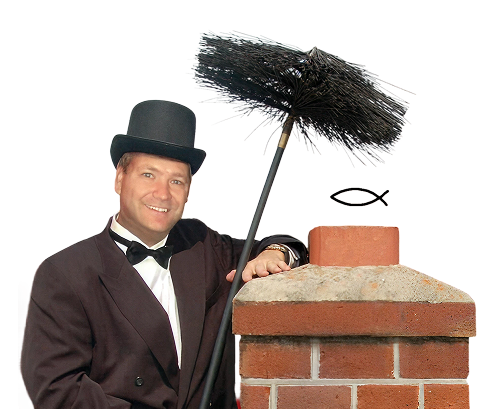Cosy Fireside: 13 Essential Tips for Chimney Security
As autumn leaves fall and temperatures drop, the allure of a crackling fireplace beckons. However, amidst the cosy glow and warmth, chimney safety should remain a top priority. In this guide, we unveil thirteen additional, unique safety tips to ensure your chimney’s tranquillity and your home’s security.
- Schedule Annual Chimney Inspections
Regularly scheduled annual chimney inspections by certified professionals are essential for maintaining the safety of your chimney and fireplace. These inspections involve a thorough examination of your chimney’s interior and exterior, identifying any potential hazards, structural issues, or buildup that might compromise its safety. By investing in this preventative measure, you can address any emerging problems promptly, ensuring that your chimney functions safely and efficiently year-round. If you have any type of hesitation or you never avail professional chimney inspection or related service, we suggest you go here to see how to easily finding the best chimney sweep.
What If You Ignore
You might let minor cracks or obstructions proceed unchecked. Over time, these flaws can develop into expensive structural damage, leakages into occupied areas, or even chimney fires.
- Regularly Clean Your Chimney
The importance of regular chimney cleaning cannot be overstated when it comes to ensuring safety. Over time, as you use your fireplace, creosote, a highly flammable substance, accumulates inside the chimney flue. Creosote buildup poses a significant fire risk, as it can ignite and lead to chimney fires. To mitigate this danger, it is recommended to have your chimney professionally cleaned regularly. Chimney sweeps or specialized cleaning logs can effectively remove creosote, reducing the risk of a potentially catastrophic fire.
What If You Ignore
Dirty chimneys provide an environment for creosote to accumulate. A single spark can cause the buildup to ignite, leading to a chimney fire that can engulf your house.
- Install a Chimney Cap
A chimney cap serves as a simple yet effective safeguard for your chimney. This metal cover is placed on top of the chimney crown, and its primary purpose is to keep debris, rainwater, and animals out of the chimney flue. By preventing foreign objects and critters from entering your chimney, you not only maintain a cleaner and more efficient chimney system but also reduce the risk of blockages or obstructions that could hinder proper airflow or lead to chimney fires.
What If You Ignore
If you don’t have a cap, rainwater, plant material, or even birds and rodents can make their way into the flue. This causes clogs, rot, and structural damage within the chimney over time.
- Ensure Proper Ventilation
Proper ventilation is crucial for the safe operation of your chimney and fireplace. Inadequate airflow can result in the buildup of dangerous gases like carbon monoxide. To prevent such risks, it’s essential to ensure that your chimney and fireplace system is correctly designed and maintained to allow for efficient venting of combustion byproducts. Regular inspections and adjustments by professionals can help guarantee that your chimney maintains optimal ventilation, minimizing the potential for carbon monoxide buildup.
What If You Ignore
Inadequate ventilation causes smoke to travel back into living areas and potentially deadly gas accumulation, most notably carbon monoxide which is odorless, colorless, and possibly deadly.
- Use Seasoned, Dry Wood
The choice of wood for your fireplace can significantly impact the safety of your chimney. Burning seasoned, dry wood is essential to prevent excessive creosote formation. Green or unseasoned wood contains a higher moisture content, which can lead to incomplete combustion and more creosote buildup. Using well-seasoned wood ensures cleaner and more efficient fires, reducing the risk of creosote accumulation and potential chimney fires.
What If You Ignore
Combustion of wet or green wood adds more smoke, obscures the flue with creosote more quickly, and speeds up accumulation that fills the chimney or ignites.
- Install Smoke and Carbon Monoxide Detectors
Installing smoke and carbon monoxide detectors near your chimney and fireplace is a critical safety measure. These detectors serve as early warning systems, alerting you to the presence of smoke or hazardous levels of carbon monoxide. By having these detectors in place, you can quickly respond to any emerging issues, such as a chimney fire or a malfunctioning fireplace, and take appropriate action to protect yourself and your family from harm.
What If You Ignore
If you don’t have detectors, you might not know dangerous gases are infiltrating your living area until it’s too late. Carbon monoxide poisoning or fire can happen without you ever knowing.
- Keep Flammable Materials Away
Maintaining a safe distance between your fireplace and any flammable materials is essential to prevent accidental fires. This means avoiding the placement of combustibles such as paper, wood, or fabric near the fireplace. Even when the fireplace is not in use, these items should be kept at a safe distance to prevent sparks or embers from igniting them. Additionally, consider using non-flammable materials for decorating the fireplace area to further reduce fire hazards.
What If You Ignore
One stray ember can ignite nearby materials, potentially triggering a house fire even if the chimney itself is intact.
- Use a Spark Guard
A spark guard or screen is a vital accessory for fireplace safety. It acts as a protective barrier between the flames and the surrounding environment. By using a spark guard, you can prevent embers or sparks from escaping the fireplace and potentially igniting nearby flammable objects. This simple safety measure enhances the overall safety of your fireplace, especially during active use.
What If You Ignore
If you don’t have a guard, a stray ember may fall on rugs, floors, or furniture and unexpectedly burn them.
- Check for Cracks or Damage
Regular visual inspections of your chimney’s structure are crucial for early detection of any cracks or damage. Cracks in the chimney can compromise its integrity, potentially leading to structural failures or safety hazards. Look for signs of wear and tear, such as cracks in the mortar or bricks, loose bricks, or damaged chimney caps. If you observe any issues, it’s essential to address them promptly through repairs or chimney restoration to ensure continued safety.
What If You Ignore
Small cracks may grow, providing an opening for water penetration, compromising structural strength, and ultimately leading to crumbling or failure of portions of the chimney.
- Maintain Safe Clearance
Maintaining a safe clearance between your chimney and nearby combustibles is a fundamental safety practice. The specific clearance requirements may vary depending on local building codes and the type of fireplace or stove you have. To prevent fires, it’s important to adhere to these guidelines and ensure that no flammable materials or objects are placed too close to the chimney. Adequate clearance allows for proper heat dissipation and reduces the risk of accidental ignition.
What If You Ignore
Lack of clearance welcomes unintended fire transmission due to heat or spark proximity to flammable objects near your chimney.
- Ensure Proper Chimney Lining
The chimney lining plays a critical role in the safety and efficiency of your chimney system. It serves as a protective barrier, preventing heat and combustion byproducts from penetrating the chimney’s masonry and potentially igniting nearby structures. Chimney liners may deteriorate or sustain damage over time. It’s essential to ensure that your chimney has a suitable and intact lining. Regular chimney inspections can identify any issues with the lining, allowing for timely repairs or replacements to maintain safety.
What If You Ignore
A compromised liner lets heat, gas, and fire invade masonry or adjacent wood framing and create a fire hazard within the building.
- Use Appropriate Tools
Using the right tools and equipment for your fireplace is not only essential for efficiency but also for safety. Fireplace tools, such as pokers, tongs, and shovels, are designed for safely managing the fire, adjusting logs, and handling hot ashes or embers. Using the correct tools reduces the risk of burns or accidents while maintaining control over the fire’s operation.
What If You Ignore
Inadequate or improvised tools heighten the chances of burns, scattered embers, or controlled fires that tax the chimney system.
- Educate Family on Fire Safety
Educating all members of your household about fire safety practices and procedures is a fundamental aspect of chimney safety. Teach family members about the safe operation of the fireplace, including lighting, tending, and extinguishing fires. Discuss emergency procedures.
What If You Ignore
If household members are unaware of safe practices, improper use or faulty accident handling can cause sparks, burns, or ignition of combustible materials nearby, particularly in multiple-person households.
Conclusion:
With these 13 unique safety tips, you can confidently adopt the comforting benefits of your fireplace. By safeguarding against unexpected challenges and embracing best practices, your hearth will become a source of warmth, comfort, and lasting memories. May your fires burn brightly, safely, and warmly throughout the seasons.

Connor H.
Connor is expert in understanding various chimney repair.


